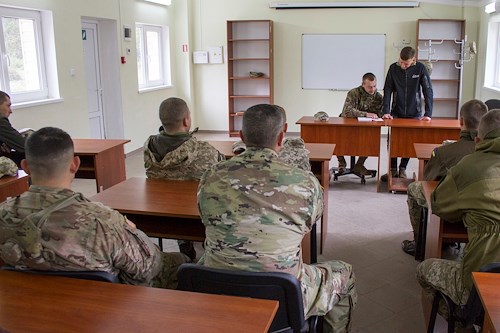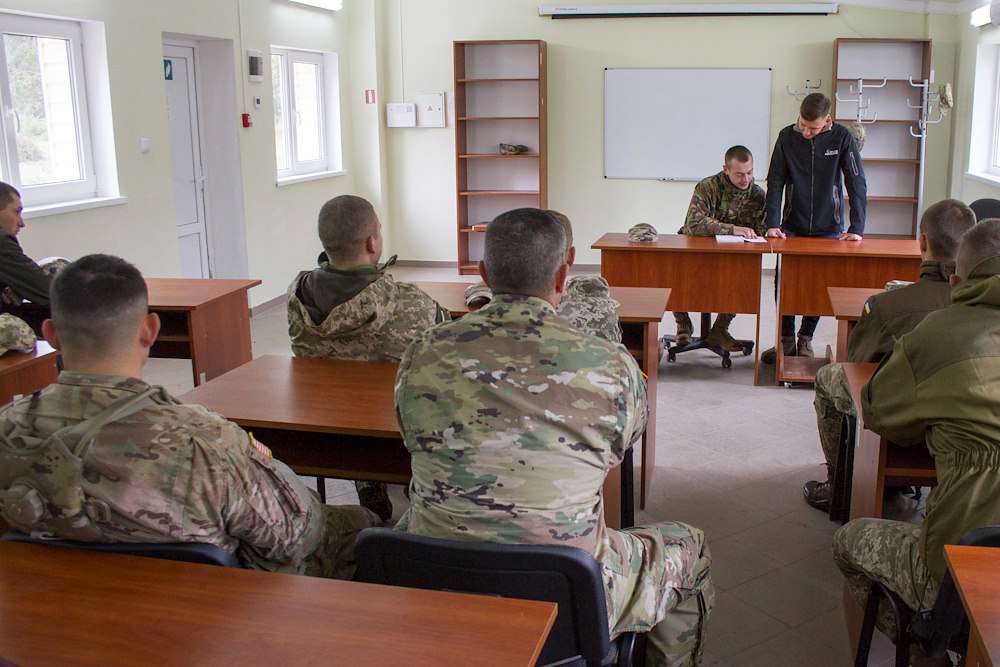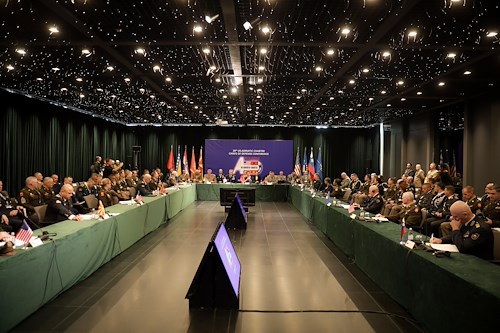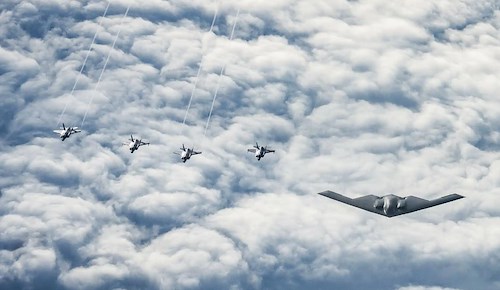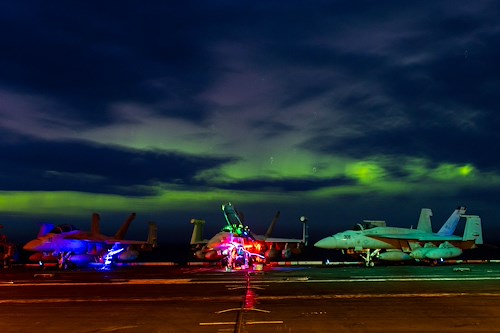Gallery contains 4 images
×
Photo 1 of 4
45th Infantry Brigade Combat Team conducts NCO professional development in Ukraine
A Ukrainian army noncommissioned officer teaches a class about the AK-74 rifle during a combined U.S. and Ukrainian NCO professional development class at the Yavoriv Combat Training Center on the International Peacekeeping and Security Center in Western Ukraine, on Oct. 7. (Photo by Sgt. Anthony Jones, 45th Infantry Brigade Combat Team)
Photo by: Sgt. Anthony Jones
Photo 2 of 4
45th Infantry Brigade Combat Team conducts NCO professional development in Ukraine
A Ukrainian army noncommissioned officer assigned to the Yavoriv Combat Training Center opposing force unit listens to Sgt. Christopher Hammond during an NCO professional development class at the CTC on the International Peacekeeping and Security Center in Western Ukraine, on Oct. 7. (Photo by Sgt. Anthony Jones, 45th Infantry Brigade Combat Team)
Photo by: Sgt. Anthony Jones
Photo 3 of 4
45th Infantry Brigade Combat Team conducts NCO professional development in Ukraine
A Ukrainian soldier assigned to the Yavoriv Combat Training Center opposing force unit observes his field of fire, watching for approaching soldiers from the Ukrainian army's 1st Airmobile Battalion, 79th Air Assault Brigade during a battalion force-on-force exercise that served as the battalion's capstone event while training at the Yavoriv CTC on the International Peacekeeping and Security Center, near Yavoriv, Ukraine, on June 29. (Photo by Sgt. Anthony Jones, 45th Infantry Brigade Combat Team)
Photo by: Sgt. Anthony Jones
Photo 4 of 4
45th Infantry Brigade Combat Team conducts NCO professional development in Ukraine
A Ukrainian soldier assigned to the Yavoriv Combat Training Center opposing force unit engages approaching soldiers from the Ukrainian army's 1st Airmobile Battalion, 79th Air Assault Brigade during a battalion force-on-force exercise that served as the battalion's capstone event while training at the Yavoriv CTC on the International Peacekeeping and Security Center, near Yavoriv, Ukraine, on June 29. (Photo by Sgt. Anthony Jones, 45th Infantry Brigade Combat Team)
Photo by: Sgt. Anthony Jones
When the 45th Infantry Brigade Combat Team arrived in Ukraine in January, the Soldiers were tasked with mentoring Ukrainian combat training center staff and improving their training ability.
One way the 45th set out to accomplish that goal was by building the opposing force unit’s noncommissioned officer corps. Doing this takes many shapes, but one way is through the NCO development program.
“It’s sergeants’ time,” said Sgt. Christopher Hammond, a Midwest City, Oklahoma resident serving in Ukraine with the 45th. “It’s a time for NCOs to gather and share knowledge.”
What started as training in the field, has grown to a combined U.S.-Ukrainian classroom-based development program where both U.S. and Ukrainian NCOs prepare classes and teach each other in a low-pressure environment, Hammond said.
“It’s important to get comfortable,” Hammond said. “In this setting, they can build confidence, and if they need correction it happens here, with NCOs, and doesn’t happen in front of soldiers during training.”
By conducting the NCO development classes with fellow NCOs, and away from junior soldiers and officers, the sergeants learn to be confident in their public speaking and teaching skills along with their ability to be subject matter experts.
“You don’t want to have to read from a book in front of the soldiers, so you read through and practice,” Hammond said. “Someone will have additional questions so you must know the material."
The impact of the NCO development program is felt by Ukrainian units who come to train at the CTC and have to test their mettle against the OPFOR.
Hammond said since the 45th started the NCO development program with the OPFOR NCOs, their on-the-spot corrections have increased along with NCOs being able to explain to junior soldiers why tasks are done in a certain way.
These improvements help the OPFOR be a more technically and tactically proficient enemy for rotational troops to face-off against in training.
“When [the rotational units] go to conflicts, the enemy won’t just lay down,” Hammond said. “With training the way we do, the rotational units learn to think and make adjustments on the fly. This makes the rotational unit stronger and more adaptable to challenges. It broadens their view and gives them an idea of what to expect in combat.”

